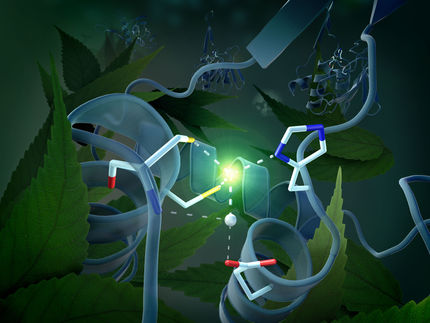Mode of Action for Santhera's Catena and its Relevance for Mitochondrial Disorders Revealed
Santhera Pharmaceuticals announced the publication of details on the mode of action of idebenone (brand name Catena®) in PLoS ONE (Public Library of Sciences ONE). For the first time, a detailed biochemical pathway is described how idebenone can restore energy production in cells which are deficient in complex I of the mitochondrial electron transport chain. The observed activities confirm a unique mode of action and separate the effectiveness of idebenone from Coenzyme Q10. The data confirm the rationale for the use of idebenone in the treatment of mitochondrial disorders with impaired complex I function such as Leber's Hereditary Optic Neuropathy (LHON).
"From previous studies it was clear that idebenone can transfer electrons onto complex III of the mitochondrial electron transport chain. This new work now closes the gap in our understanding how exactly this transfer is accomplished", summarized Thomas Meier, Santhera's Chief Scientific Officer. "Biochemical and cellular experiments now show that the cytosolic enzyme NQO1 uses idebenone as a substrate, which in turn can transport electrons into the mitochondria and onto complex III. This shuttling of electrons effectively by-passes the deficient complex I and increases the levels of ATP."
Idebenone, a short-chain benzoquinone, holds therapeutic potential for several mitochondrial and neuromuscular disorders. Researchers at Santhera now found that idebenone upon reduction by the cytosolic enzyme NAD(P)H:quinone oxidoreductase 1 (NQO1) generates a cytosolic-mitochondrial electron shuttle that can effectively bypass complex I of the mitochondrial electron transport chain and increase cellular energy levels. Interestingly, this mechanism is not shared with long-chain quinones, such as Coenzyme Q10, which is a poor substrate for NQO1. This mode of action for idebenone is particularly relevant for disorders characterized by deficiencies of the mitochondrial complex I, such as Leber's Hereditary Optic Neuropathy (LHON), Mitochondrial Encephalomyopathy, and Lactic Acidosis and Stroke-like episodes (MELAS).
Original publication
Other news from the department research and development

Get the life science industry in your inbox
By submitting this form you agree that LUMITOS AG will send you the newsletter(s) selected above by email. Your data will not be passed on to third parties. Your data will be stored and processed in accordance with our data protection regulations. LUMITOS may contact you by email for the purpose of advertising or market and opinion surveys. You can revoke your consent at any time without giving reasons to LUMITOS AG, Ernst-Augustin-Str. 2, 12489 Berlin, Germany or by e-mail at revoke@lumitos.com with effect for the future. In addition, each email contains a link to unsubscribe from the corresponding newsletter.
Most read news
More news from our other portals
Last viewed contents
Category:Dog_breed_registries






















































